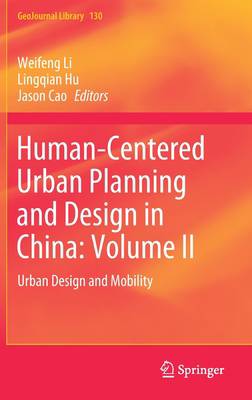
- Afhalen na 1 uur in een winkel met voorraad
- Gratis thuislevering in België vanaf € 30
- Ruim aanbod met 7 miljoen producten
- Afhalen na 1 uur in een winkel met voorraad
- Gratis thuislevering in België vanaf € 30
- Ruim aanbod met 7 miljoen producten
Human-Centered Urban Planning and Design in China: Volume II
Urban Design and Mobility
Omschrijving
This book provides insights and discusses human-centered urban design and placemaking, human activities and urban mobility in China. It argues that sustainable urban design and mobility should be "people-centered" and concerned about "place-making" in the new era of Chinese urbanization. Successful urban design and placemaking should adopt interdisciplinary approaches to planning and designing "space" and "place". A core vision is the delivery of urban spaces that can cater to the needs of an increasingly diverse crowd of urban dwellers calling cities home. The book prompts Chinese urbanists to reconsider and explore a sustainable and people-first planning and design approach with Chinese characteristics. The breadth and depth of this book is of particular interest to those faculty members, students, practitioners and the general public who are interested in subjects like urban design, transport planning, mobility analysis and planning, housing and community development, infrastructure planning, environmental planning, social equity and beyond.
This book discussing human-centered urban design and placemaking, human activities and urban mobility is part of a 2 volume set. Volume I deals with human-centered urban planning and development, rural planning and urban-rural coordination in China.
Specificaties
Betrokkenen
- Uitgeverij:
Inhoud
- Aantal bladzijden:
- 358
- Taal:
- Engels
- Reeks:
- Reeksnummer:
- nr. 130
Eigenschappen
- Productcode (EAN):
- 9783030838591
- Verschijningsdatum:
- 16/11/2021
- Uitvoering:
- Hardcover
- Formaat:
- Genaaid
- Afmetingen:
- 156 mm x 234 mm
- Gewicht:
- 693 g

Alleen bij Standaard Boekhandel
Beoordelingen
We publiceren alleen reviews die voldoen aan de voorwaarden voor reviews. Bekijk onze voorwaarden voor reviews.










